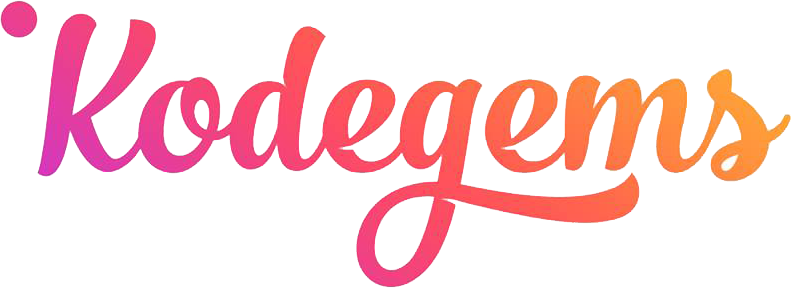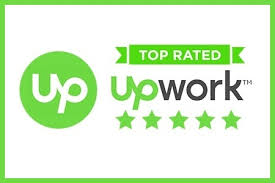Contents
- 1 Difference between a Landing page and a Website?
- 2 types of landing pages?
- 3 what is High-Converting Landing Page funnel
- 4 Tips and Tricks for a High-Converting Landing Page
- 5 Define your target audience
- 6 Keep it simple
- 7 Make a strong first impression
- 8 Offer a clear value proposition
- 9 Create a sense of urgency
- 10 Use clear and compelling call-to-action (CTA)
- 11 Optimize for mobile devices
- 12 Test and refine
- 13 conclusion
- 14 FAQ
Creating a high-converting landing page is crucial in today’s digital age.
A website that is visually appealing and user-friendly is not enough. The landing page is the first interaction a user has with your website and it is important to make a positive impression.
This standalone page is designed to promote a product, service, or offer with the ultimate goal of converting visitors into customers.
In this article, we will provide tips and strategies for creating a landing page that effectively converts.
Difference between a Landing page and a Website?
A landing page and a website are two distinct but related entities.
A landing page is a single page that appears in response to clicking on a search engine-optimized search result, a social media post, an advertisement, or a link.
Its primary goal is to convert visitors into leads or customers by capturing their contact information through a form or a phone call.
On the other hand, a website is a collection of web pages that are linked together and accessible through a domain name.
A website may contain several pages, including a landing page, that serve different purposes such as providing information, showcasing products or services, facilitating online transactions, and many others.
A website provides a more comprehensive representation of a company or an individual and offers a broader range of information and services compared to a landing page.
READ: Accelerated Mobile Pages (AMP): A Comprehensive Guide
types of landing pages?
There are several types of landing pages, each with its specific purpose and design. Some of the most common types of landing pages include:
Click-Through Landing Page: This type of landing page is designed to entice visitors to click through to the next page of the website. It usually features a strong headline, a clear call-to-action (CTA), and a minimal amount of additional information.
Lead Generation Landing Page: This type of landing page is designed to capture lead information, such as names and email addresses, through the use of forms.
Lead generation landing pages typically feature a form prominently on the page and offer a valuable incentive, such as an eBook or a webinar, in exchange for contact information.
Sales Page: A sales page is a type of landing page that is designed to convert visitors into paying customers.
It typically features a detailed description of a product or service, customer testimonials, and a strong call to action to purchase.
Squeeze Page: A squeeze page, also known as an opt-in page, is similar to a lead generation landing page, but it is designed to capture only email addresses.
The goal is to build a mailing list of potential customers.
Launch Page: A launch page is a type of landing page that is used to generate excitement and build anticipation for an upcoming product or service.
It typically features a countdown timer, a sign-up form, and a preview of what the product or service will offer.
Webinar Landing Page: This type of landing page is designed to promote an upcoming webinar and encourage visitors to sign up.
It typically features information about the webinar, the speaker, and the date and time, as well as a sign-up form.
These are some of the most common types of landing pages. The type of landing page that is best for your business will depend on your specific goals and the type of product or service you are offering.
READ: Core Web Vitals: Understanding the Key Metrics for Website Performance
what is High-Converting Landing Page funnel
A High-Converting Landing Page funnel is a series of pages that guide visitors toward a specific conversion goal, such as making a purchase or filling out a form to become a lead.
The purpose of a landing page funnel is to nurture visitors and build trust, leading them through a step-by-step process that eventually leads to a desired action.
A typical landing page funnel consists of the following stages:
Awareness: This is the first stage of the landing page funnel, where visitors become aware of your product or service. They may have arrived on your landing page through a search engine, social media, or an advertisement.
Interest: In this stage, visitors are interested in what you have to offer and want to learn more.
This is where you provide them with additional information, such as product features and benefits, to help them make an informed decision.
Desire: This stage is where visitors develop a strong desire for your product or service. They may have read customer reviews or watched product demos, and they are now convinced that your product is the right fit for their needs.
Action: In the final stage of the landing page funnel, visitors take action, either by making a purchase, filling out a form, or performing another desired action.
Each stage of the landing page funnel is designed to move visitors closer to the desired conversion goal. By providing valuable information and building trust, you can increase the chances of visitors taking the desired action.
It’s important to note that not all visitors will move through the entire funnel, and that’s okay.
The goal of the landing page funnel is to provide the best possible experience for your visitors and to guide them toward the desired conversion goal in a way that feels natural and intuitive.
READ: Mastering the Art of Conversion Rate Optimization CRO
Tips and Tricks for a High-Converting Landing Page
Define your target audience
The first step in creating a High-Converting Landing Page that converts is to know your target audience.
You need to understand their needs, preferences, and pain points to create a landing page that resonates with them.
You can gather this information through market research, surveys, or by analyzing your website traffic data. Once you know your target audience, you can tailor your landing page to meet their needs and offer a solution to their problems.
Keep it simple
When it comes to High-Converting Landing Pages, less is more. The simpler the page, the easier it is for visitors to focus on what’s important and take action. Use a clean and simple design, with a clear and concise message that is easy to understand. Avoid clutter and keep the page free of distractions, such as pop-ups, sidebars, and unnecessary links.
Make a strong first impression
Your landing page is your first chance to make a good impression, so make sure that it looks professional and trustworthy. Use high-quality images and graphics, and choose a color scheme that reflects your brand’s personality. Make sure that the page loads quickly, as slow-loading pages can lead to high bounce rates.
Offer a clear value proposition
Your landing page should clearly state what you’re offering and how it will benefit the user. Your value proposition should be concise and easy to understand, and it should be prominently displayed on the page. The value proposition is the main reason why visitors should take action, so make sure that it’s compelling and relevant.
Create a sense of urgency
Creating a sense of urgency can be an effective way to motivate visitors to take action. For example, you could offer a limited-time discount, or you could highlight that your offer is only available for a limited time. Urgency can also be created through social proof, such as showing the number of people who have already taken advantage of your offer.
Use clear and compelling call-to-action (CTA)
Your call-to-action (CTA) is the most critical element of your landing page, and it’s what drives conversions. A CTA should be clear and concise, with a strong message that motivates visitors to take action. The CTA should be prominent, easy to find and placed in a location where it’s easy to click. The color and design of the CTA should stand out and be consistent with your brand.
READ: How to Improve Your Bounce Rate and Boost Your Search Engine Rankings
Optimize for mobile devices
With the increasing number of users accessing websites on mobile devices, it’s essential to optimize your landing page for mobile. Make sure that the page is responsive and adjusts to different screen sizes. Avoid using pop-ups and auto-playing videos, as they can be intrusive and negatively impact the user experience.
Test and refine
Finally, it’s crucial to continually test and refine your landing page to ensure that it’s performing at its best. Use A/B testing to try different versions of the page and compare their results. Track your page’s performance using tools such as Google Analytics, and use the data to make informed decisions about what changes to make.
conclusion
In conclusion, creating a High-Converting Landing Page that converts is essential for the success of your online business. By following these tips and tricks, you can create a landing page that is optimized for conversions and provides a positive user experience.
Remember to keep the page simple, offer a clear value proposition, and use a strong CTA.
Continually test and refine your landing page to ensure that it’s performing at its best. Start implementing these strategies today and see the difference they make in your conversion rates.
FAQ
What is a landing page?
A landing page is a specific web page that a user is directed to after clicking a link, usually from an advertisement or search engine result. The goal of a landing page is to convert visitors into customers by presenting a clear and compelling offer.
Why is a landing page important?
A landing page is important because it’s the first interaction a user has with your website, and it can make or break the decision to convert. A well-designed landing page can help you increase conversions and generate more leads for your business.
What are the key elements of a landing page?
The key elements of a landing page include a clear value proposition, a strong headline, a clear and concise CTA, supporting images or videos, social proof, and an optimized form.
How do I create a landing page that converts?
To create a landing page that converts, you need to focus on the user experience and make sure that the page is optimized for conversions. This includes offering a clear value proposition, using a strong headline, having a prominent and easy-to-click CTA, and using supporting images or videos.
How do I optimize my High-Converting Landing Page for conversions?
To optimize your landing page for conversions, you should simplify the page, offer a clear value proposition, use a strong CTA, use supporting images or videos, and continually test and refine the page.
What tools can I use to create a High-Converting Landing Page?
There are many tools available to help you create a landing page, including WordPress, Leadpages, Unbounce, and Instapage. Choose a tool that best fits your needs and budget, and consider factors such as ease of use, features, and integrations.
How do I measure the success of my landing page?
You can measure the success of your landing page using tools such as Google Analytics, which can track metrics such as conversion rates, bounce rates, and average time on the page. You can also use A/B testing to compare different versions of your landing page and see which one performs best.
I Design and Develop SEO optimized Websites that help Businesses and E-commerce stores to generate 5X more REVENUE ⭐ Designed 500+ Websites || WordPress Developer || Web Designer 🏆 Top Rated On UPWORK


